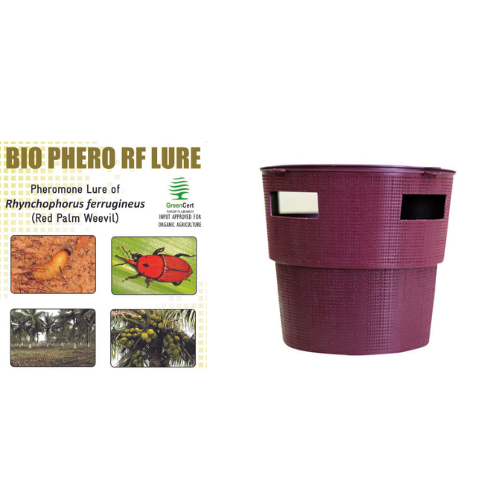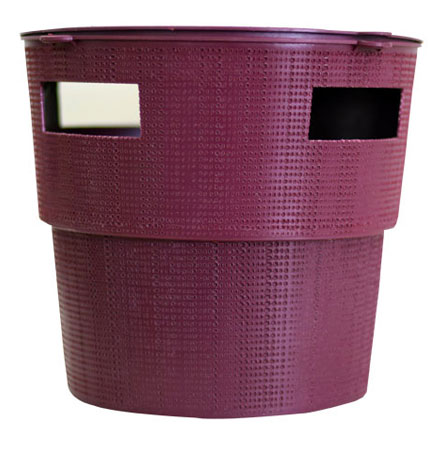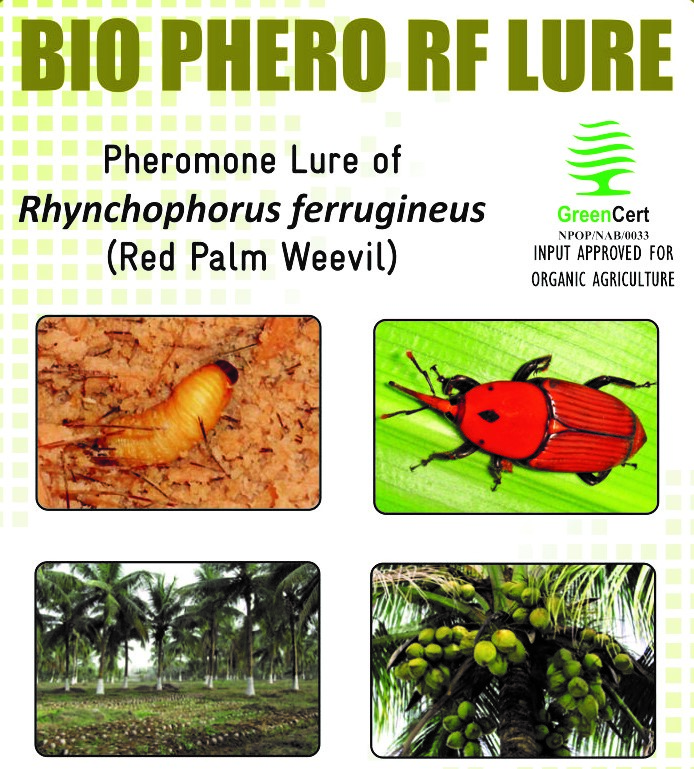




SONKUL AGRO INDUSTRIES PRIVATE LIMITED
Lure With Trap
Pheromone lure for Red palm weevil (Rhynchophorus ferrugineus)
Target Plants- Coconut
Usage Instruction-
Cut open this pack and slide the lure piece outside.
Do not touch the lure with bare hands.
Fix this lure properly in a trap by sliding it in the hole provided in the bucket trap.
Replace the lure at the recommended duration.
Wash hands thoroughly before and after handling the trap and lure.
Discard used lure by burning or burying underground.
Trap to be used: Bucket Trap
Number of traps per Acre: 1-2
Life of Lure: 180 Days
Contents:
One pheromone lure of Rhynchophorus ferrugineus
Identification-
Eggs are oval and creamy white in color. Eggs laid in scooped out small cavities, wounds, and other cut injuries on the trunk Light yellowish grub without legs. Stout, fleshy, and apodous with a conical body bulged in the middle and tapering towards the end.
The full frown larva pupates inside the stem and the fibrous cocoon is made out of fibrous strands. A full-grown Reddish brown weevil has six dark spots on the thorax. The male has a conspicuous long snout has a tuft of hair.
Life Cycle-
The adult female lays approximately two hundred eggs at the base of young leaves, or in open lesions on the plant. The egg hatches into a white, legless larva.
The larva will feed on the soft fibers and terminal buds, tunneling through the internal tissue of the tree for about a month. The larvae can occasionally grow to a length of six to seven centimeters.
At pupation, the larva will leave the tree and form a cocoon at the base of the tree. The total life cycle takes about 7–10 weeks.
The neonate larvae are yellow-white, segmented, legless, and have a chitinous head capsule that is a darker brown than the rest of the body.
They have powerful horizontal conical jaws which they use to burrow from the axils of the leaves to the crown, where they feed voraciously.
Upon completion of larval development, the larva will sometimes emerge from the trunk of the tree.
The adult insect is an excellent flier and is able to travel great distances while they prefer to attack palms that are already infested or weakened by other stresses, they will colonize healthy palms.
Nature of Damage-
The hole can be seen on the stem with chewed-up fibres protruding out, Many times reddish brown liquid can be seen oozing out from the hole.
The grubs cause damage inside the stem or crown by feeding on soft tissues and often cause severe damage especially when a large number of them bore into the soft, growing parts. In case of severe infestation, the inside portion of the trunk is completely eaten and becomes full of rotting fibers.
In the case of young palms the top withers while in older palms the top portion of the trunk bends and ultimately breaks at the bend (wilting). Sometimes the gnawing sound produced by the feeding grubs inside will also be audible. In the advanced stage of infestation yellowing of the inner whorl of leaves occurs.
Target Plants-
Coconut
Usage Instruction-
Cut open this pack and slide the lure piece outside.
Do not touch the lure with bare hands.
Fix this lure properly in a trap by sliding it in the hole provided in the bucket trap.
Replace the lure at the recommended duration.
Wash hands thoroughly before and after handling the trap and lure.
Discard used lure by burning or burying underground.
Trap to be used: Bucket Trap
Number of traps per Acre: 1-2
Life of Lure: 180 Days
BUCKET TRAP -
A bucket Trap with interlocking plastic vanes is the most suitable trap for monitoring red palm weevil and rhinoceros beetle.
Pheromone lure can be attached to plastic vanes.
Simple to assemble and hook in every farm field, it's easy for maintenance and removal of dead flies enabling multi-season use.